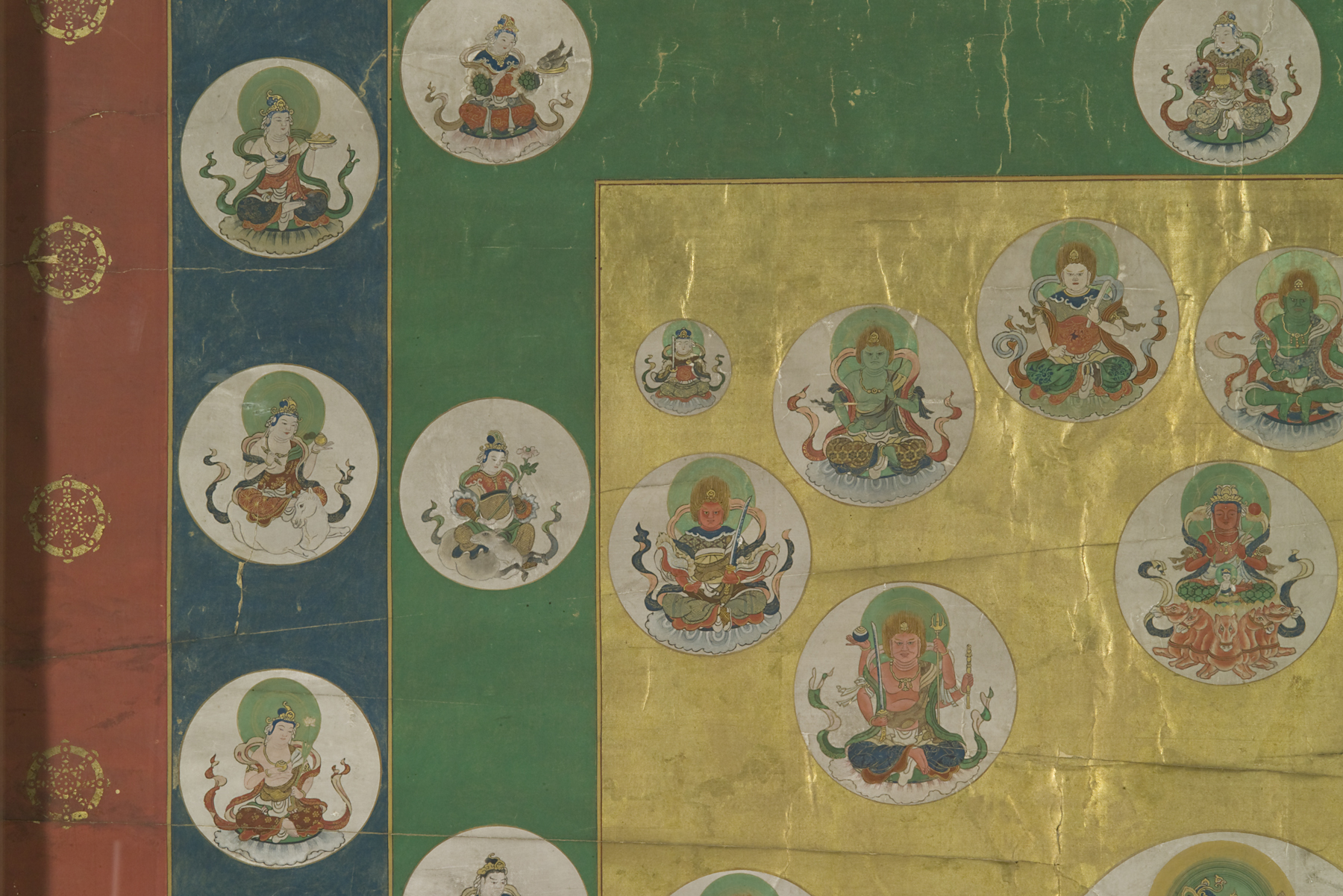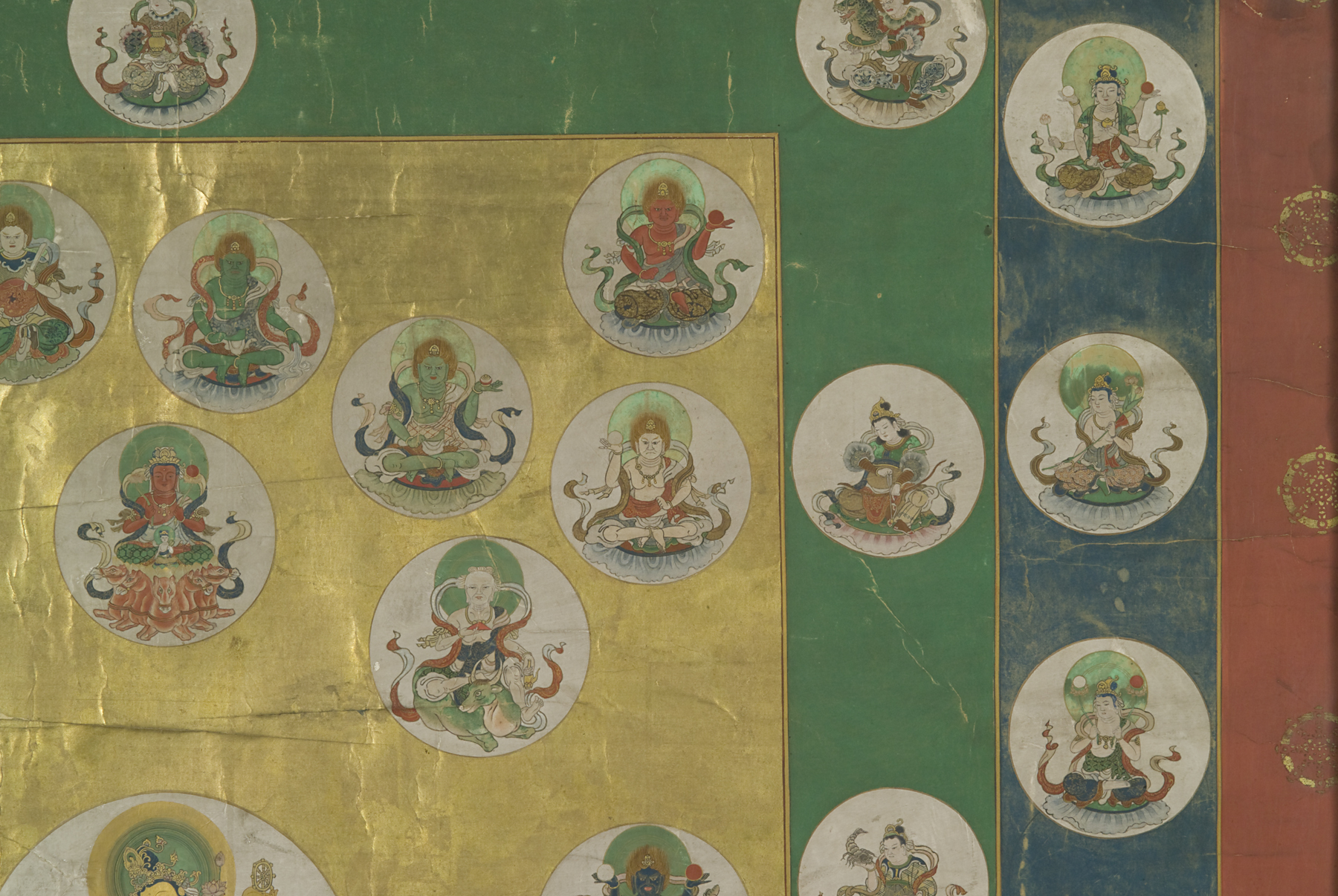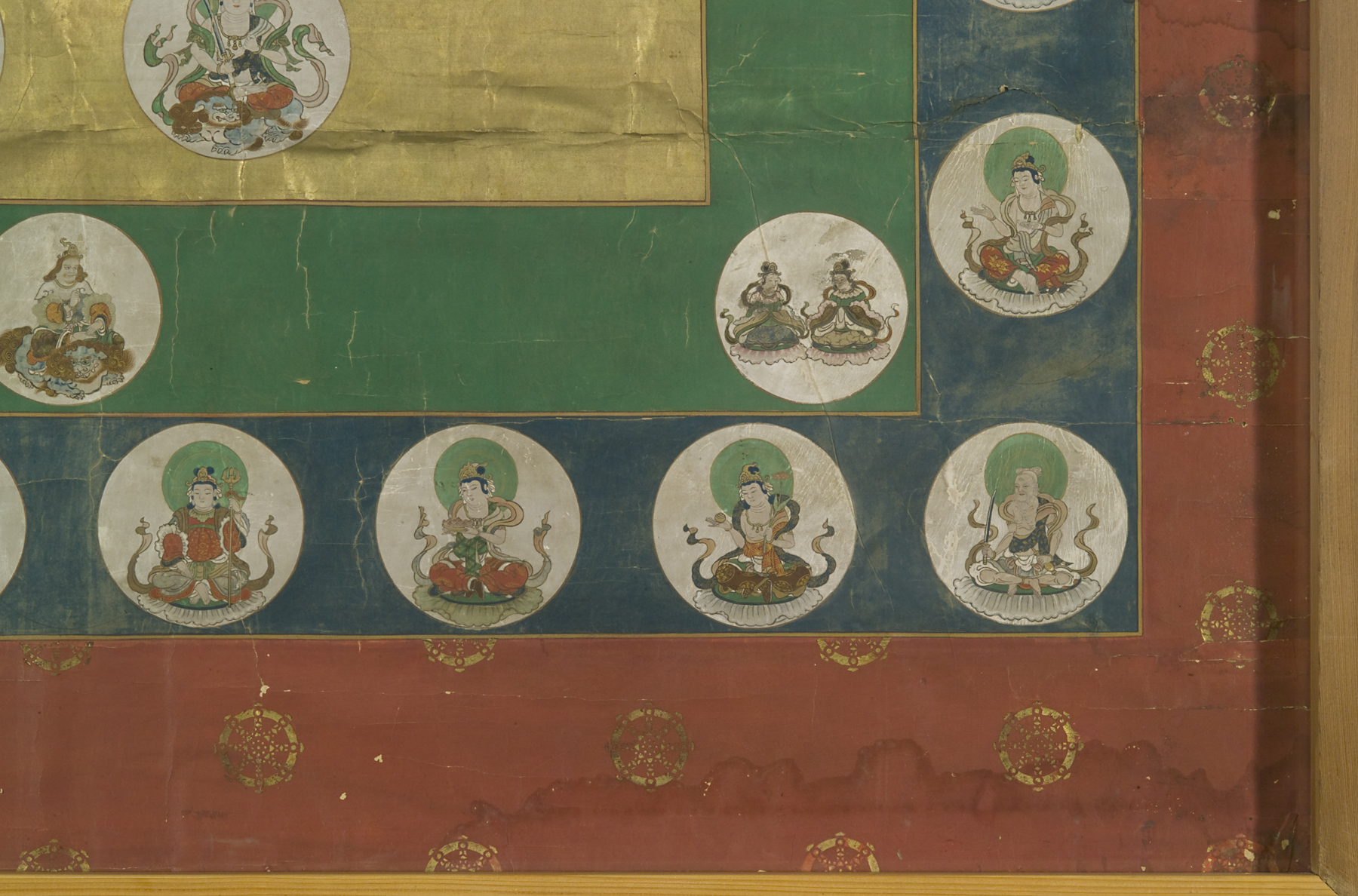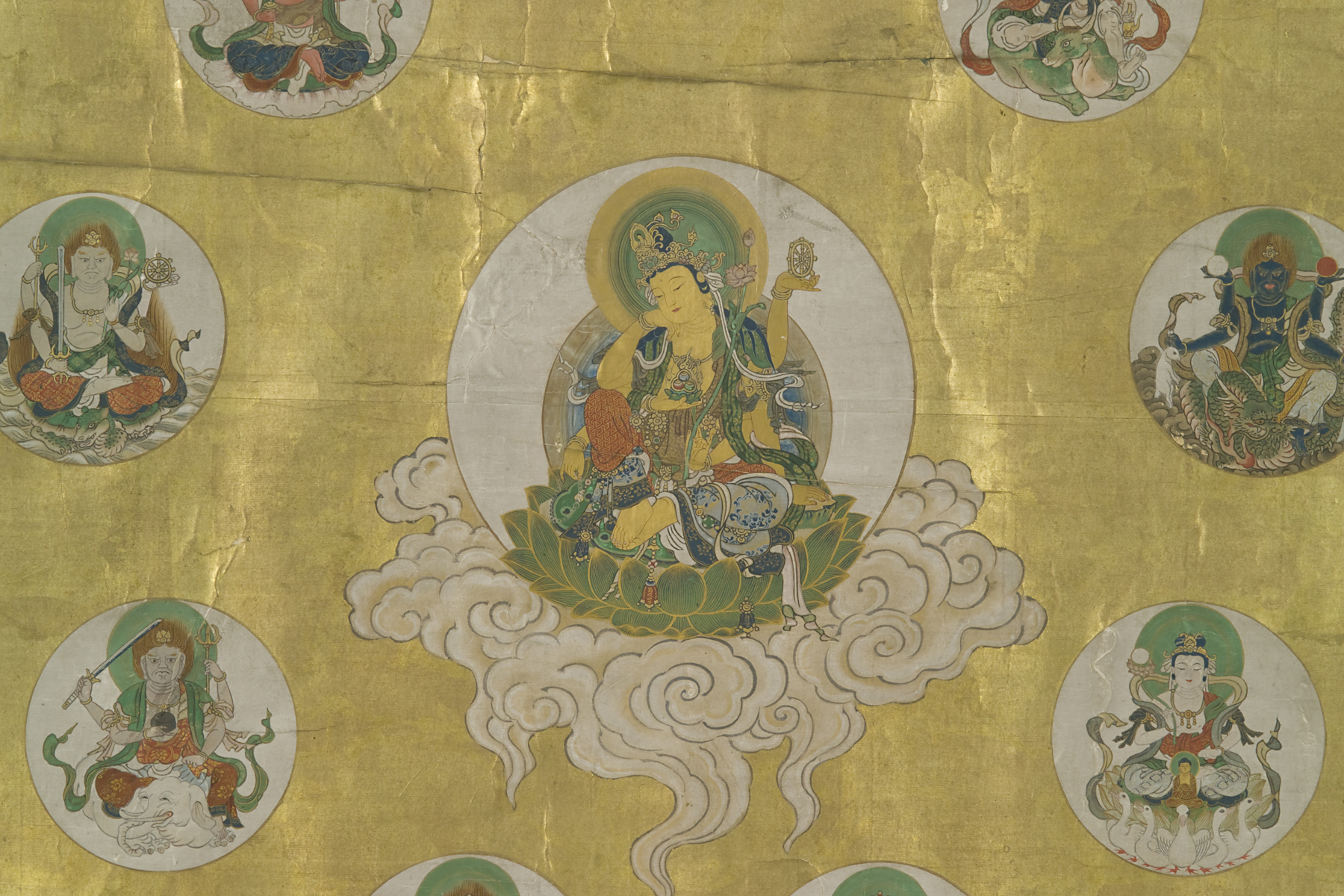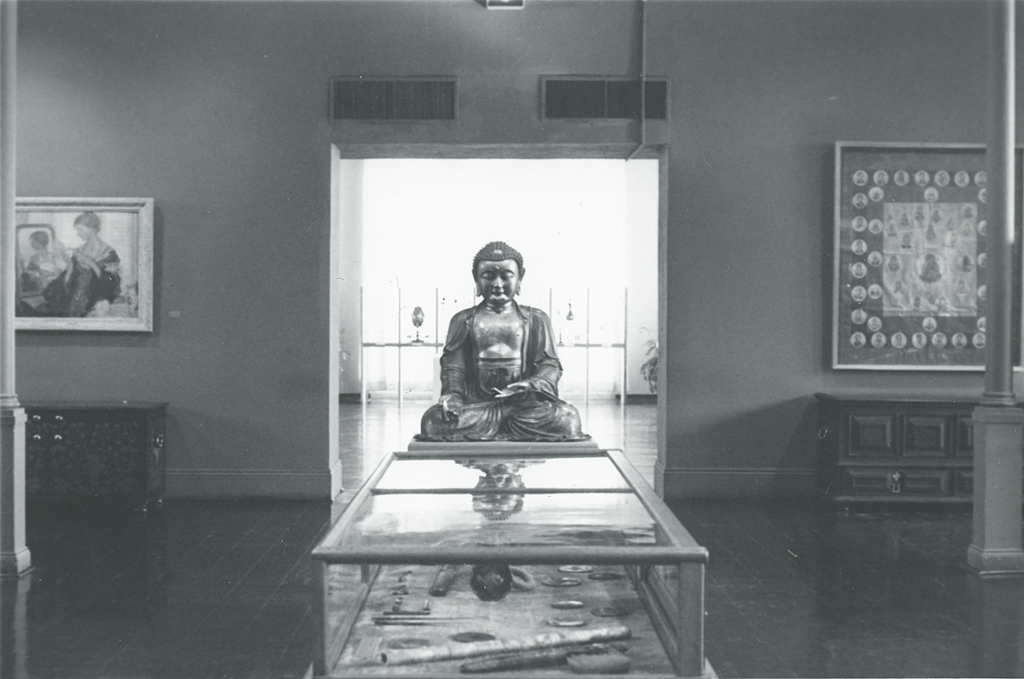Nyōirin Kannon Star Mandala, unknown maker from Japan
Artwork Overview
Nyōirin Kannon Star Mandala
, late 1700s, Edo period (1600–1868)
Where object was made: Japan
Material/technique: oil cloth; paper; tempera
Dimensions:
Image Dimensions Height/Width (Height x Width): 165.4 x 141.4 cm
Image Dimensions Height/Width (Height x Width): 65 1/8 x 55 11/16 in
Image Dimensions Height/Width (Height x Width): 165.4 x 141.4 cm
Image Dimensions Height/Width (Height x Width): 65 1/8 x 55 11/16 in
Credit line: William Bridges Thayer Memorial
Accession number: 0000.1278
Not on display
If you wish to reproduce this image, please submit an image request



